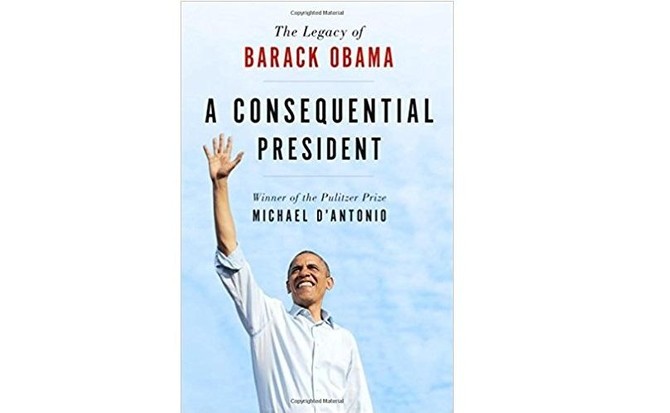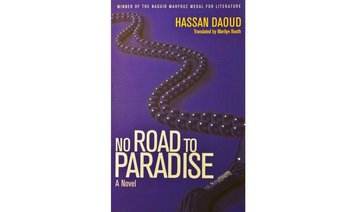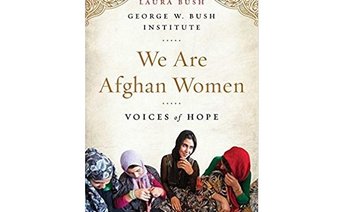Since leaving the White House, the Obamas have taken holidays in Palm Springs, the Caribbean and Hawaii. They are still decompressing after an intense period that dates back to Barack Obama’s 2004 convention speech. According to his former senior adviser, Valerie Jarrett, “he is enjoying a lower profile where he can relax, reflect and enjoy his family and friends.”
Obama is still young and he left office held in high esteem. He has expressed his desire to remain active in civic life, but he is still keeping a low profile. However, his whereabouts have been obsessively scrutinized and, for many, it is not too soon to judge the former US president.
Pulitzer Prize-winning writer Michael D’Antonio tackles Obama’s legacy in “A Consequential President: The Legacy of Barack Obama.” This book is a step toward developing a fuller appreciation of President Obama’s legacy.
Obama took the oath of office before a crowd of more than 1.8 million people, which was, by some estimates, the largest ever such crowd gathered in Washington. During his inaugural address, he underlined the three major challenges facing the country, namely the deepest economic recession since 1929, terrorism and climate change.
The recession remained the most important problem Obama faced during his presidency and he could not wait to put an end to it. Millions of people had lost their jobs. The value of real estate was going down and, during the course of 2008, some 860,000 homeowners received foreclosure notices. Bill Clinton famously remarked during the 1992 presidential election that the primary concern is “the economy, stupid” and the economy remained the highest priority for Obama throughout his presidency.
When Obama signed the Recovery Act, he said that it was “the beginning of the end” of the recession. This bill was the most expensive and most radical economic program ever implemented by Washington. Beside tax breaks for businesses and individuals, about $500 billion would be allocated for food stamps, unemployment benefits, lunches for poor schoolchildren and for an exhaustive list of projects that would revive the economy and invest in lasting public works.
Obama also rescued America’s three biggest auto companies — Chrysler, General Motors and Ford — from the brink of disaster. Their CEOs had, according to the book, traveled to Washington by private jet to ask for a $25 billion taxpayer bailout. “The carmakers were in deep trouble caused, in part, by their own blunders,” D’Antonio wrote. “They had failed to offer models that would sustain market share and profit over the long term,” he added. In short, these companies had created, engineered and produced failed models.
On March 30, when president Obama addressed the car industry’s crisis, he said: “We cannot, and must not and we will not let our auto industry simply vanish. This industry is like no other, it’s an emblem of the American spirit (and) a once and future symbol of America’s success. It’s a pillar of our economy that has held up the dreams of millions of our people.” He added: “We cannot continue to excuse poor decisions. We cannot make the survival of our auto industry dependent on an unending flow of taxpayer dollars. These companies and this industry must ultimately stand on their own and not as wards of the state.”
The Economist had initially criticized Obama’s rescue plan and argued that “General Motors deserved extinction.” One year later, in August 2010, the editors admitted they had been wrong: “An apology is due to Barack Obama — his takeover of General Motors could have gone horribly wrong, but it has not.”
Doris Kearns Goodwin, presidential historian and author of bestselling biographies, wrote that “in the near-term, Obama brought stability to the economy, to the job market, to the housing market, to the auto industry and to the banks. That’s what he’s handing over, an economy that is in far better form than it was when he took over.”
Obama’s health care reforms, another great achievement, put an end to the soaring cost of medical care and to the inadequate treatment that threatened the health and well-being of millions of Americans.
Before the Affordable Care Act, people diagnosed with cancer who had no health insurance were treated with the help of charities and by incurring crushing debts. But this act, which has been nicknamed “Obamacare,” ensured Americans had access to cutting-edge treatment at a reasonable cost.
On the day Obama signed the bill, he announced that it was not a “radical reform,” rather a “major reform” that would show that “we are still a people capable of doing big things.”
Obama was also awarded the Nobel Peace Prize for “his extraordinary efforts to strengthen international diplomacy and cooperation between peoples” and because the committee recognized that “only very rarely has a person, to the same extent as Obama, captured the world’s attention and given its people hope for a better future.”
Despite this, his inability to act in Syria created a political, human and moral disaster. During an interview, Obama acknowledged that Syria was the issue that haunted him the most. Syria represents Obama’s biggest foreign policy failure.
However, Obama’s legacy rests on many other aspects of his time as president and his rise to the post.
“The single undeniable aspect of Obama’s legacy is that he demonstrated that a black man can become president of the United States. This accomplishment will inform the first line in his obituary and will earn him assured mention in every American history textbook written from now to eternity,” said H.W. Brands, a professor of history at the University of Texas.
Obama will also be remembered for his grace and the lack of any personal scandals, according to the book. In the long term, historians will take over from journalists and analyze his time in office. However, there is still a lot we cannot know until time passes.
Book Review: The legacy of a president
Book Review: The legacy of a president

What We Are Reading Today: Money Capital

Authors: Patrick Bolton & Haizhou Huang
In this book, leading economists Patrick Bolton and Haizhou Huang offer a novel perspective, viewing monetary economics through the lens of corporate finance.
They propose a richer theory, where money can be seen as the equity capital of a nation, playing a similar role as stocks for a company.
What We Are Reading Today: ‘Crossing Thoughts’

Author: Sultan Ayaz
“Crossing Thoughts” is a fantasy novel in English by Saudi author Sultan Ayaz, published in 2017.
Ayaz’s novel is about humans defending their homeland against demon oppression. It is about the eternal fight between humanity and demons, and the person who stands between them.
The story begins with Drake, a child who lives a peaceful life with his family in a small town. However, a demonic attack destroys the village, but Drake somehow survives.
Three characters emerge: Aria, Ray and Amber, who study the nature of elements at the Grand College of Elements in the Kingdom of Iora, one of three kingdoms suffering demonic oppression. They learn to employ elemental magic as a weapon against their demonic opponents.
Aria (wind element user), Amber (fire element user) and Ray (thunder element user) end up fighting a sea demon and are discovered by a mysterious man called Soul, who admires their powers and helps them train to become “demon slayers,” to free humans from oppression.
There are many fight scenes in the storyline using magic and elements, and the book is full of drama, plot twists and terror.
What I liked about the narrative is how easy it is to read and follow, and the development of the world building —from the village to the Kingdom of Iora.
The female characters in the novel shine brighter and have distinct styles, making them more intriguing to read about, and each possesses a particular power.
It might be confusing for some readers that the story begins with Drake’s perspective and then cuts to the story of Aria, Amber and Ray. However, the more you read, the more intriguing the female storylines become.
The book has received four-plus star ratings on the Goodreads website and is simple enough to read in one sitting.
In 2020, Ayaz became one of the first Saudi novelists to have a fiction work in English published overseas when Olympia Publishers, a British publishing house, purchased the rights to “Crossing Thoughts.”
The novel is also set to be adapted into a Manga comic by Manga Arabia.
What We Are Reading Today: When the Bombs Stopped

Author: Erin Lin
Over the course of the Vietnam War, the United states dropped 500,000 tonnes of bombs over Cambodia—more than the combined weight of every man, woman, and child in the country.
Fifty years after the last sortie, residents of rural Cambodia are still coping with the unexploded ordnance that covers their land.
What We Are Reading Today: Father Time

Author: Sarah Blaffer Hrdy
It has long seemed self-evident that women care for babies and men do other things.
Puzzled and dazzled by the tender expertise of new fathers around the world— several in her own family—celebrated evolutionary anthropologist and primatologist Sarah Blaffer Hrdy set out to trace the deep history of male nurturing and explain a surprising departure from everything she had assumed to be “normal.”
What We Are Reading Today: ‘Breaking the Mold’

Authors: RAGHURAM G. RAJAN AND ROHIT LAMBA
India’s economy has overtaken the United Kingdom’s to become the fifth-largest in the world, but it is still only one-fifth the size of China’s, and India’s economic growth is too slow to provide jobs for millions of its ambitious youth.
In “Breaking the Mold,” Raghuram Rajan and Rohit Lamba show why and how India needs to blaze a new path if it’s to succeed.


















